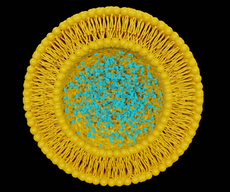Nanodiscs-Forming Charge-Free Synthetic Polymers
TECHNOLOGY NUMBER: 2021-044

Overview
Lipid nanoparticle technology for vaccines, therapeutics, and research applications- First non-ionic synthetic polymer that forms lipid nanodiscs, based on inulin
- Extract and reconstitute membrane proteins without the need for detergents
BACKGROUND
Lipid nanodiscs have been shown to be useful in the extraction and research of membrane-bound proteins and are a promising drug delivery technology. These systems use a polymeric "belt" to encircle a cluster of lipids to form the nanodisc structure. Although peptide-based polymers are common, recent studies have demonstrated the use of synthetic polymers to directly extract membrane proteins and reconstitute them in near-native lipid bilayer nanodiscs without using a detergent. However, the presence of charge on the polymers drastically limits their applications.
INNOVATION
Researchers at the University of Michigan have developed the first charge-free synthetic polymers that form lipid nanodiscs. These non-ionic, amphiphilic polymers form nanodiscs with both positively and negatively charged lipids. The nanodiscs demonstrate excellent stability against pH and divalent metal ions. They have been shown to directly extract and reconstitute membrane proteins, irrespective of the protein's charges, from the cell membrane without the use of any detergent. The polymers are based on inulin, a naturally occurring oligosaccharide, and are expected to be biocompatible. As such, the lipid nanoparticles that they form have excellent potential for vaccine and therapeutic delivery as well as for transfection.